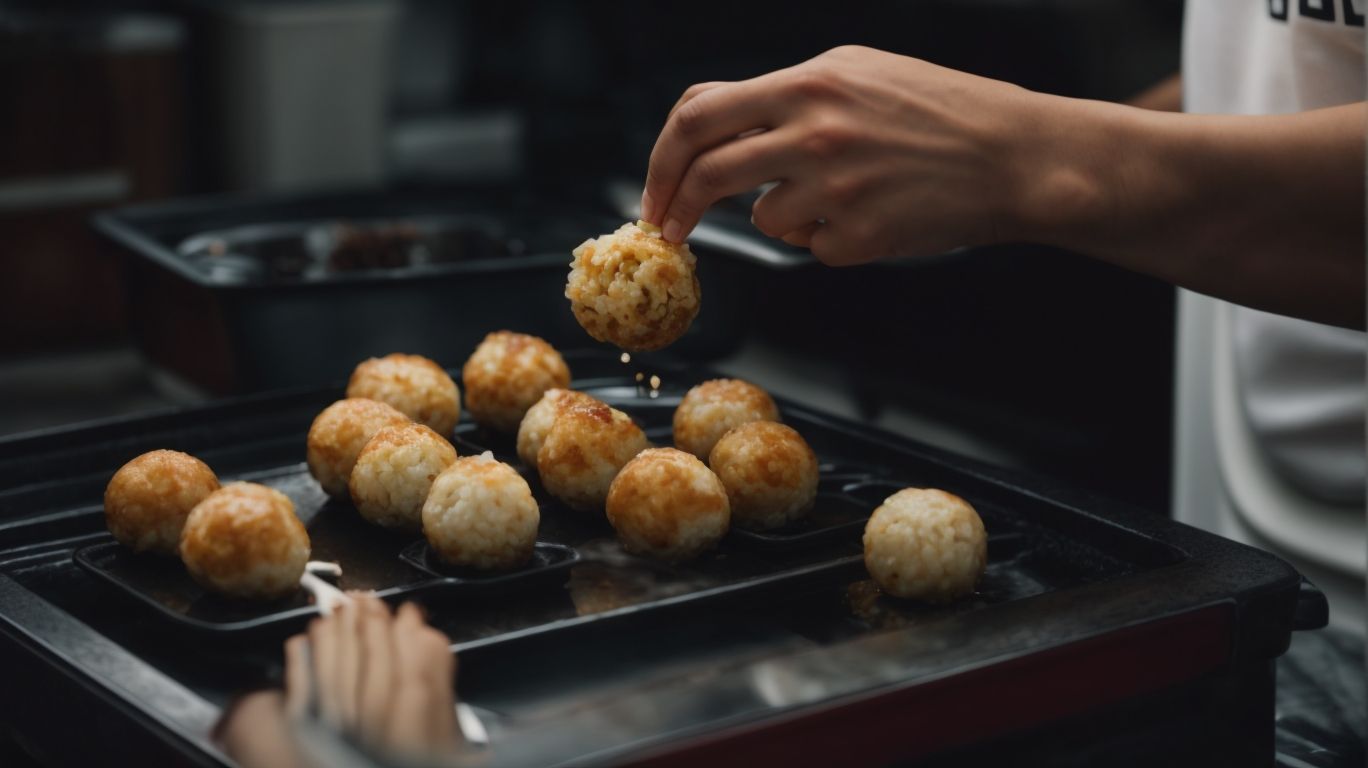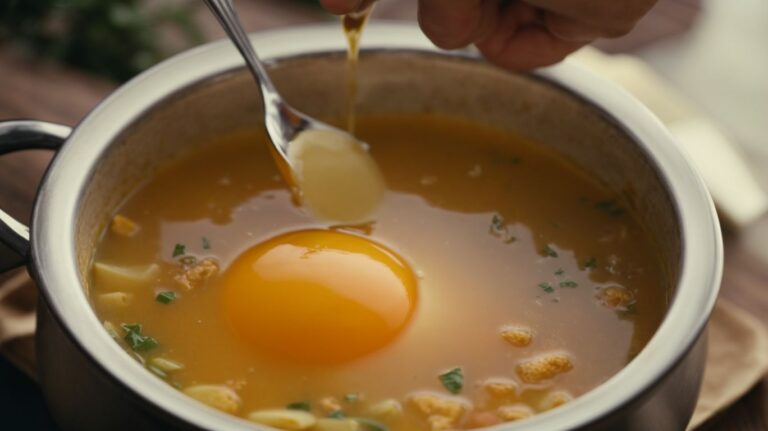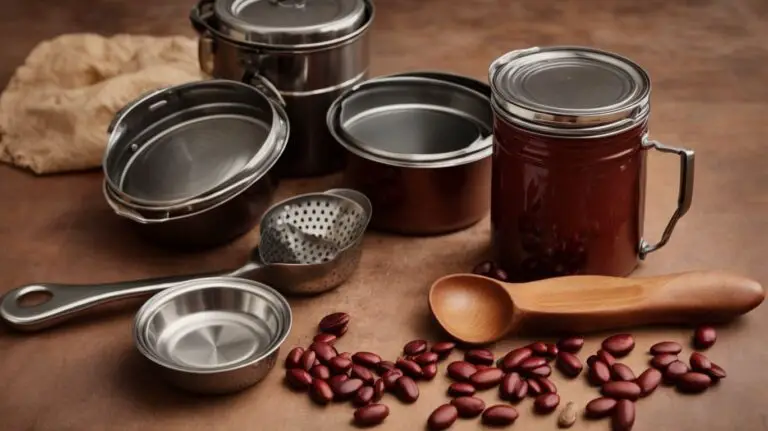How to Cook Takoyaki Without Pan?
Are you a fan of Japanese street food but don’t have a Takoyaki pan at home?
In this article, we’ll explore what Takoyaki is and how you can make this delicious dish without a traditional pan.
From using a muffin pan to a cake pop maker, we’ll walk you through alternative cooking methods and provide you with tips for making perfect Takoyaki every time.
Stay tuned for a step-by-step guide and learn how to flip Takoyaki like a pro!
Key Takeaways:
What is Takoyaki?
Takoyaki is a traditional Japanese street food known for its delicious flavors and unique texture. Originating from Japan, Takoyaki has gained popularity among foodies worldwide for its savory taste and crispy exterior.
This delectable dish has a rich history that dates back to the streets of Osaka in the 1930s, where it was first created by a street vendor. The name ‘Takoyaki’ itself translates to ‘octopus balls,’ one of the key ingredients used in this recipe.
The batter, typically made from flour, dashi, and eggs, is poured into special hemispherical molds along with diced octopus, tempura scraps, green onions, and pickled ginger. The balls are then cooked in a Takoyaki pan, constantly rotated until they achieve a golden-brown hue.
Takoyaki is often topped with a rich sweet and savory sauce, mayonnaise, bonito flakes, and dried seaweed, adding layers of flavor and umami to this popular street food delicacy.
What is a Takoyaki Pan?
A Takoyaki pan is a specialized cooking tool used to make Takoyaki, featuring multiple hemispherical molds to shape the batter into round balls. This pan is essential for creating the perfect Takoyaki texture and shape.
The design of a Takoyaki pan allows for even distribution of heat, ensuring that each Takoyaki ball is cooked uniformly. Unlike alternative methods such as using an electric griddle or a skillet, the Takoyaki pan’s unique shape helps in achieving the signature crispy exterior and gooey interior of Takoyaki. This pan is distinct from aebleskiver pans due to its shallower depth and smaller size, perfect for making bite-sized Takoyaki balls.
What are the Different Types of Takoyaki Pans?
Different types of Takoyaki pans include electric griddles, skillets, aebleskiver pans, and even muffin tins or cake pop makers as alternative methods. Each type offers unique features for cooking Takoyaki.
Electric griddles with their non-stick surfaces provide even heat distribution, perfect for making multiple Takoyaki at once. Skillets, while versatile, may require extra attention to prevent sticking, but are excellent for achieving a crispy exterior. Aebleskiver pans, specifically designed for Danish pancake balls, work well for Takoyaki due to their spherical cavities.
On the other hand, using muffin tins or cake pop makers can be a homemade and creative way to make Takoyaki, although shaping may be more challenging. Regardless of the pan used, lining them with aluminum foil makes cleaning up a breeze.
How to Cook Takoyaki Without a Pan?
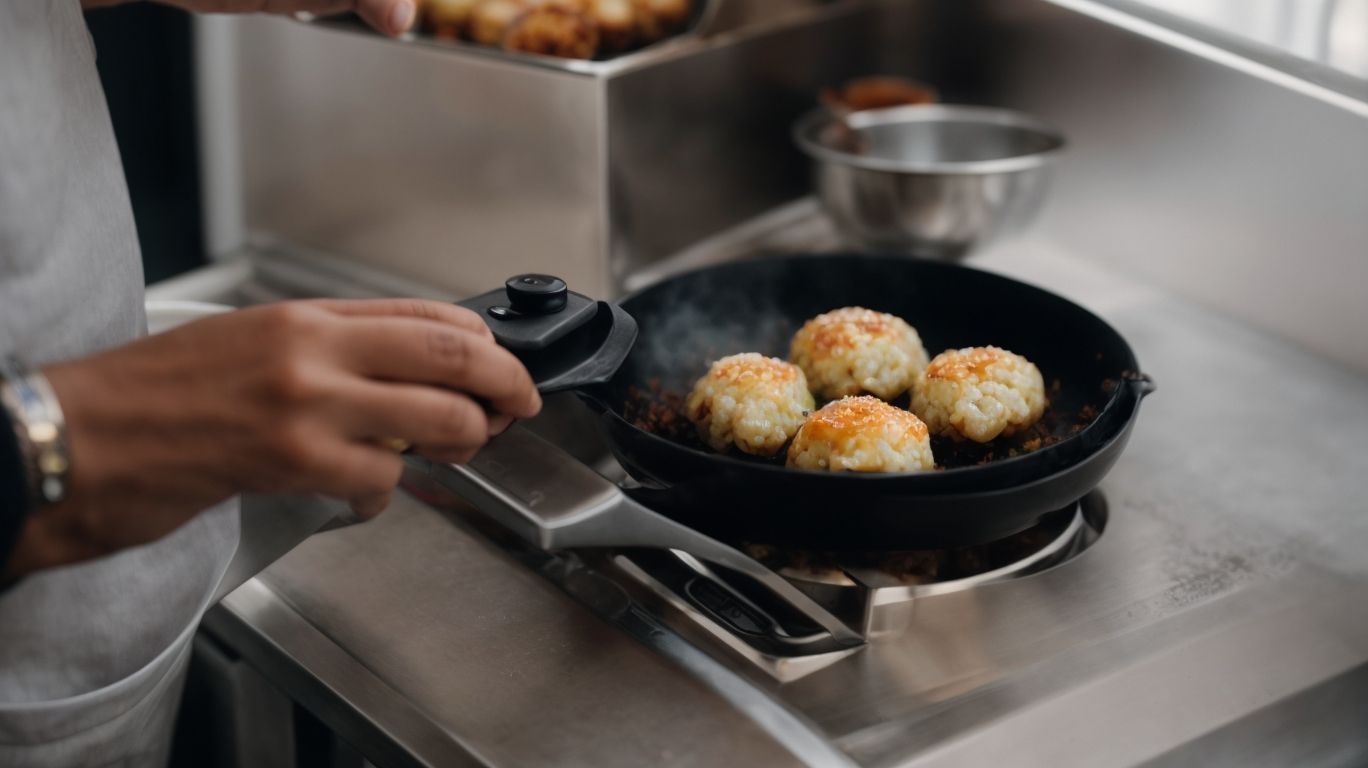
Credits: Poormet.Com – Jason Anderson
For those without a Takoyaki pan, there are alternative methods to cook this delectable dish using everyday kitchen tools. These methods offer creative ways to achieve the same delicious Takoyaki flavors.
If you don’t have a Takoyaki pan, fret not! You can use a cupcake pan as a handy substitute. Simply preheat the oven, grease the pan with cooking oil, and pour the Takoyaki batter into each cup. Bake until golden, rotating the pan halfway through for even cooking. Once done, top with Takoyaki sauce, mayonnaise, nori flakes, and bonito flakes for that authentic taste.
What are the Alternative Cooking Methods for Takoyaki?
Alternative cooking methods for Takoyaki include using muffin pans, Takoyaki grill plates, and even cake pop makers. These methods offer versatility in preparing this Japanese delicacy.
Each method brings its unique touch to the Takoyaki-making process, allowing enthusiasts to experiment with different techniques and presentations. While the traditional Takoyaki grill plate ensures the authentic round shape and crispy exterior, muffin pans cater to a larger batch size, ideal for gatherings and parties. Alternatively, using a cake pop maker provides convenience and speed, making it a quick and efficient option for satisfying those sudden cravings.
How to Make Takoyaki Using a Muffin Pan?
Using a muffin pan is a convenient way to make Takoyaki at home without a traditional Takoyaki pan. This method allows for easy shaping and cooking of the Takoyaki batter.
When preparing Takoyaki with a muffin pan, start by greasing the muffin pan wells generously to prevent sticking. Fillings such as diced octopus, tempura scraps, pickled ginger, and green onions can be placed in each well for added flavor and texture.
To create the signature round shape, use a spoon to pour the homemade batter into the wells, ensuring they are filled just below the brim. Keep the batter slightly runny to enable it to flow easily and form the perfect ball shape as it cooks.
How to Make Takoyaki Using a Takoyaki Grill Plate?
A Takoyaki grill plate offers a specialized cooking surface designed for making perfect Takoyaki balls. This tool ensures even cooking and authentic Takoyaki texture.
By utilizing the dedicated grill plate, you can achieve the traditional crispy exterior and soft interior that characterize Takoyaki. The design of the plate allows for the ball-shaped molds to evenly distribute heat, resulting in uniform cooking and a professional finish.
How to Make Takoyaki Using a Cake Pop Maker?
Utilizing a cake pop maker can be an innovative way to create Takoyaki with a unique shape and texture. This unconventional method offers a fun twist on traditional Takoyaki preparation.
Instructions: To start, prepare the Takoyaki batter with a mix of flour, dashi stock, eggs, and finely chopped octopus. Grease the cake pop maker wells and pour the batter into each section, adding any additional ingredients like green onions or tempura scraps for extra flavor. Close the lid and let the Takoyaki cook. Once they start to form a crust, use a skewer to carefully turn them over for even cooking. With this method, you can experiment with different fillings and toppings, allowing your creativity to shine in each bite!
What are the Ingredients for Takoyaki?
The key ingredients for Takoyaki include a savory batter, various fillings such as takoyaki pieces and vegetables, and a flavorful sauce for garnishing. These components come together to create a mouthwatering Takoyaki dish.
For an authentic flavor, using high-quality ingredients is paramount. Start with a well-balanced batter made from Japanese pancake mix, Worcestershire Sauce, and Chicken Stock Powder. The batter should be smooth and creamy to achieve the perfect texture of the Takoyaki balls. Regarding fillings, traditional choices like octopus pieces, pickled ginger, and green onion are popular. Don’t forget the Aonori (dried seaweed) and Takoyaki sauce to drizzle over the finished dish, adding that signature burst of umami flavor.
How to Make the Takoyaki Batter?
Preparing the Takoyaki batter involves combining flour, dashi, eggs, and seasonings to achieve a smooth and pourable consistency. The batter is a crucial element in creating the signature texture of Takoyaki.
To make the ideal Takoyaki batter, start by sifting flour into a mixing bowl to ensure a lump-free base. Gradually whisk in dashi broth for that umami depth, followed by cracking in eggs to bind everything together. Season generously with soy sauce, salt, and mirin for traditional flavors.
Keep whisking until you achieve a smooth and silky consistency without any visible lumps. The batter should be thick enough to coat the back of a spoon but still pourable for the cooking process.
What are the Different Fillings for Takoyaki?
Takoyaki can be filled with a variety of ingredients, including takoyaki pieces, pickled ginger, and green onions, to add depth of flavor and texture to the dish. The choice of fillings can customize the Takoyaki to suit different preferences.
For a sweet twist on this savory dish, consider filling your Takoyaki with a unique combination like Oreo ice cream rolls or Nutella for a delightful dessert version.
In places like the bustling food scene of Klang Valley, you may find innovative options like cheese, seafood, or even spicy kimchi as fillings to tantalize your taste buds. The versatility of Takoyaki allows for endless experimentation, creating a fusion of flavors that cater to a wide range of palates.
By 2024, expect to see new trends emerging with unique fillings that push the boundaries of traditional Takoyaki recipes.
How to Cook Takoyaki: Step-by-Step Guide
Cooking Takoyaki involves pouring the batter into the pan molds, adding fillings, and rotating the balls to ensure even cooking. Following a step-by-step guide is essential to mastering the art of Takoyaki preparation.
One crucial aspect of achieving the perfect Takoyaki is controlling the cooking time. Overcooking can result in a tough exterior, while undercooking may leave the center raw. The ideal Takoyaki should have a crispy outer layer with a soft and savory interior, striking a balance in texture. To prevent sticking, ensure the pan is well-greased or use a specialized Takoyaki pan. Using quality ingredients like fresh octopus or tempura scraps elevates the flavor profile.
Tips for Making Perfect Takoyaki Without a Pan
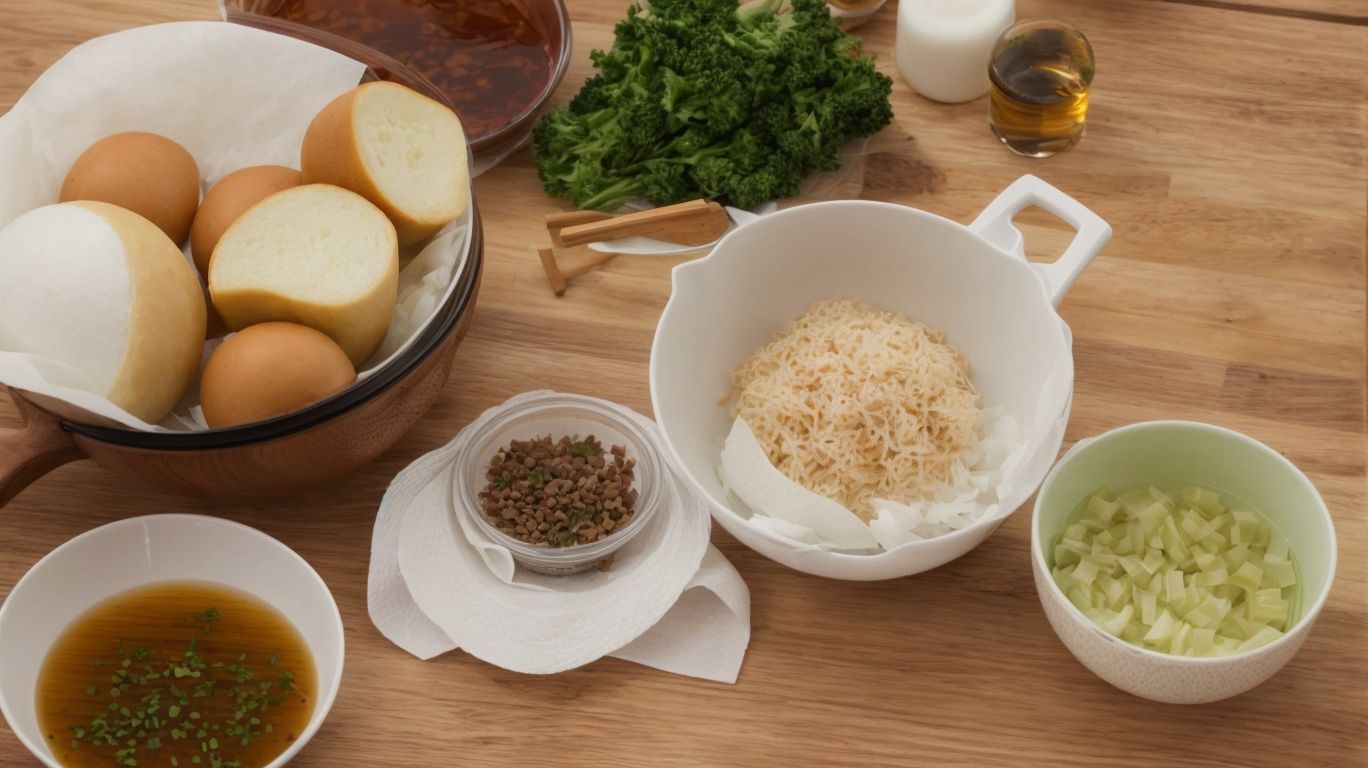
Credits: Poormet.Com – Nathan Rivera
To achieve perfect Takoyaki without a pan, consider using alternative cooking methods and mastering the art of shaping and flipping the Takoyaki balls. These tips will help you create delicious Takoyaki at home.
If you find yourself without a Takoyaki pan, fear not; a muffin tin or cake pop maker can serve as excellent alternatives for cooking up these divine Japanese treats. Simply grease the molds generously before pouring in the batter to prevent sticking. Adjust the heat carefully to ensure the Takoyaki cooks evenly without burning. Utilizing a skewer or chopstick to flip the balls as they cook will help achieve that uniform, crispy exterior.
Don’t limit yourself to traditional octopus fillings; try experimenting with grilled chicken, shrimp, or even a vegetarian option like mushrooms for a twist on the classic recipe. The versatility of Takoyaki allows for creative interpretations, making it a culinary adventure each time you cook them.
Remember that achieving the perfect texture and flavor in Takoyaki is all about practice and patience. By incorporating these unconventional techniques and ingredient variations, you can elevate your Takoyaki game to new heights, impressing friends and family with your unique take on this beloved Japanese street food favorite.
How to Ensure Even Cooking Without a Takoyaki Pan?
Achieving even cooking without a Takoyaki pan requires constant rotation and attention to the heat distribution. By following specific techniques, you can ensure that each Takoyaki ball cooks uniformly.
One effective strategy is to use a regular muffin pan as a substitute for a Takoyaki pan. Grease each cup generously with cooking oil to prevent sticking. Pour the batter into each cup and place the pan over medium heat. It’s crucial to rotate the balls consistently using a toothpick to create that signature spherical shape. Adjust the heat as needed to maintain a steady temperature for optimal cooking. Remember, Takoyaki is a popular street food in Japan, known for its crispy exterior and gooey interior, so mastering these tips will elevate your home cooking game.
How to Flip Takoyaki Without a Takoyaki Pan?
Flipping Takoyaki without a dedicated pan requires careful handling and coordination to ensure that the balls cook evenly on all sides. Mastering the flipping technique is essential for perfect Takoyaki results.
In the absence of a specialized Takoyaki pan, you can still achieve delicious results by using alternative tools like a cake pop maker, muffin tin, or aebleskiver pan. These tools require a slightly different approach but can yield equally tasty Takoyaki.
When using a cake pop maker, fill the molds with the batter and cook until the outer layer is set. Then, use a toothpick to rotate and flip the Takoyaki until they are cooked through. For a muffin tin, pour the batter into the cups and rotate the balls with tongs during the cooking process.
Ensuring uniform texture can be challenging with these makeshift methods, so keep a close eye on the cooking progress. Adjust the heat and cooking time as needed to avoid burning or undercooking the Takoyaki.
Frequently Asked Questions
1. What is Takoyaki and why is it popular?
Takoyaki is a popular Japanese street food known for its deliciously crispy exterior and creamy, savory filling. It is typically made with a batter filled with diced octopus, green onions, and tenkasu (tempura scraps).
2. Can I still make Takoyaki without a special pan?
Yes, you can still make Takoyaki without a special pan! While the traditional method involves using a specialized Takoyaki pan with round molds, there are other ways to make it at home without this tool.
3. What alternative kitchen tools can I use to make Takoyaki without a pan?
One alternative option is to use a muffin tin with round molds to create the shape of Takoyaki. Another option is to use a cake pop maker, which also has round molds that can be filled with batter and ingredients to make Takoyaki.
4. How do I make sure the Takoyaki stays together without a pan?
To ensure the Takoyaki stays together, make sure to use enough batter and fillings. You can also use a toothpick to gently press down on the edges and hold the shape of the Takoyaki while it cooks. Additionally, make sure to use enough oil to prevent sticking.
5. Is the cooking time the same when making Takoyaki without a pan?
The cooking time may vary slightly when using alternative methods to make Takoyaki without a pan. It is important to keep an eye on the Takoyaki and rotate them frequently to ensure they are cooked evenly on all sides.
6. Can I still achieve the same crispy exterior without a pan?
Yes, you can still achieve a crispy exterior for your Takoyaki without a pan. The key is to make sure the batter is evenly spread and cooked on all sides. You can also try using a higher heat setting and a bit more oil to achieve the desired crispiness.

